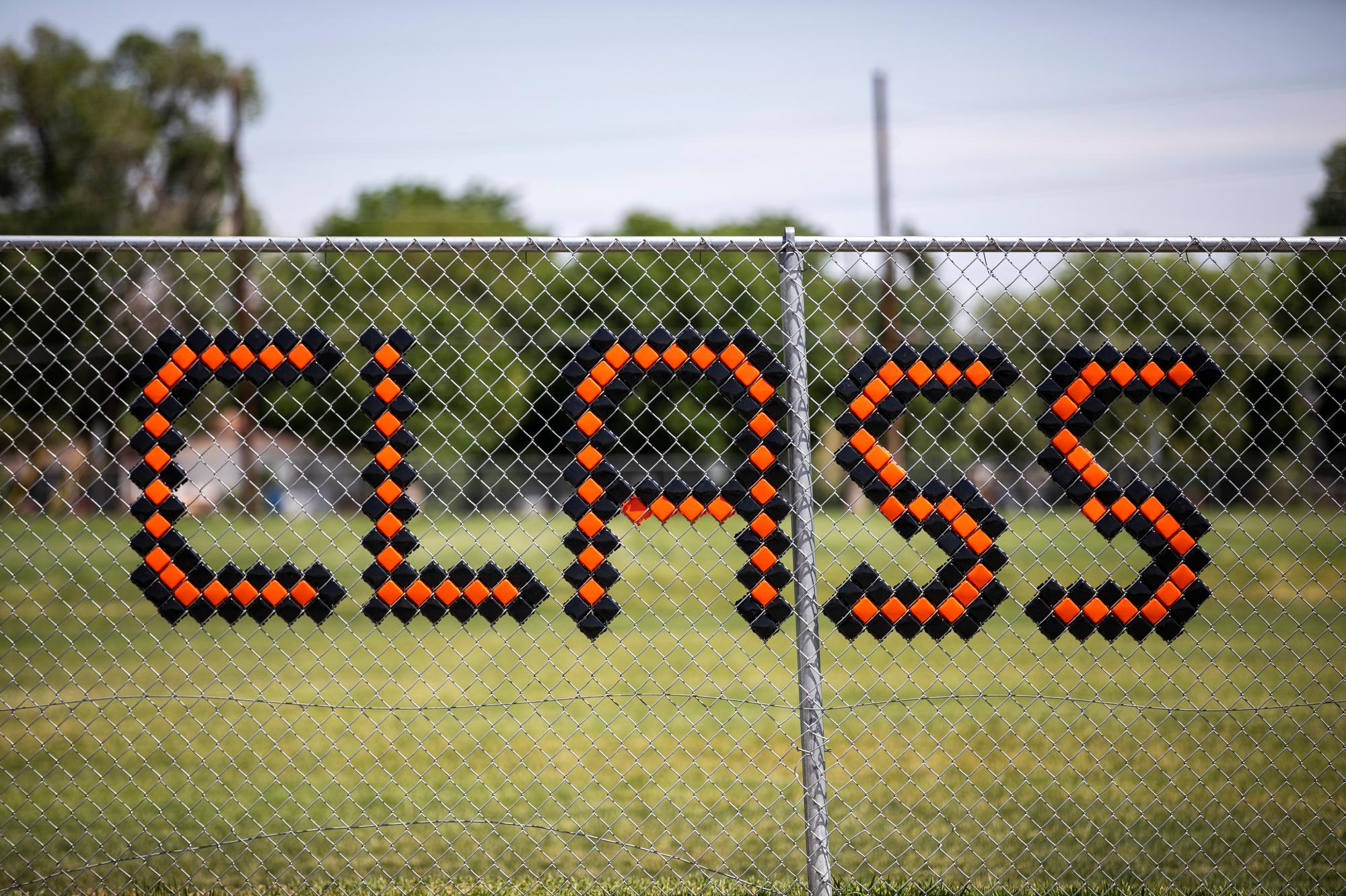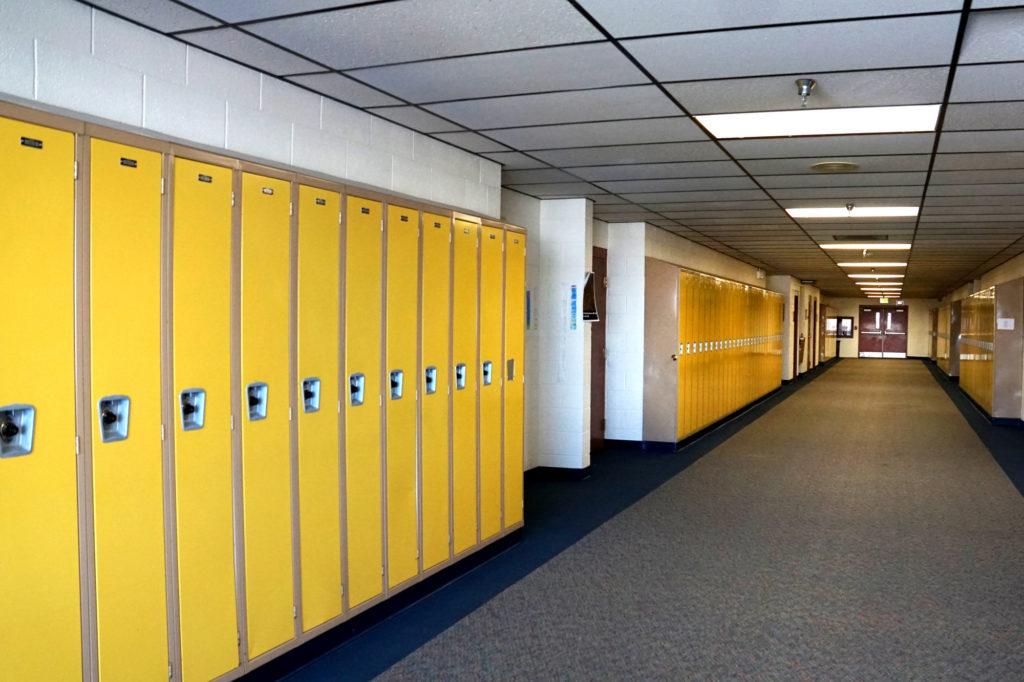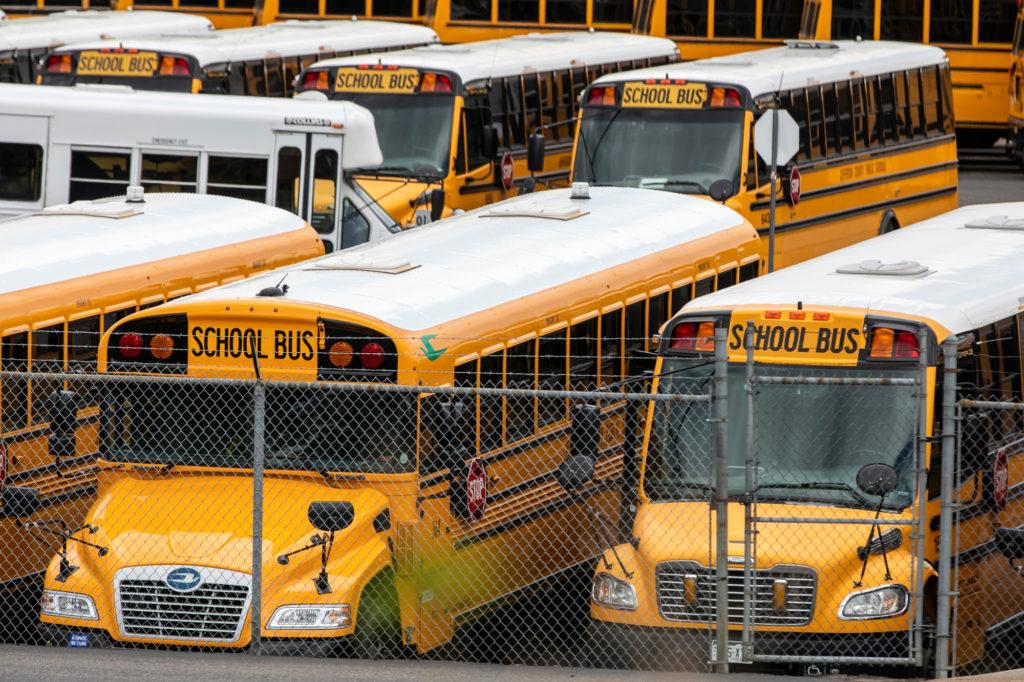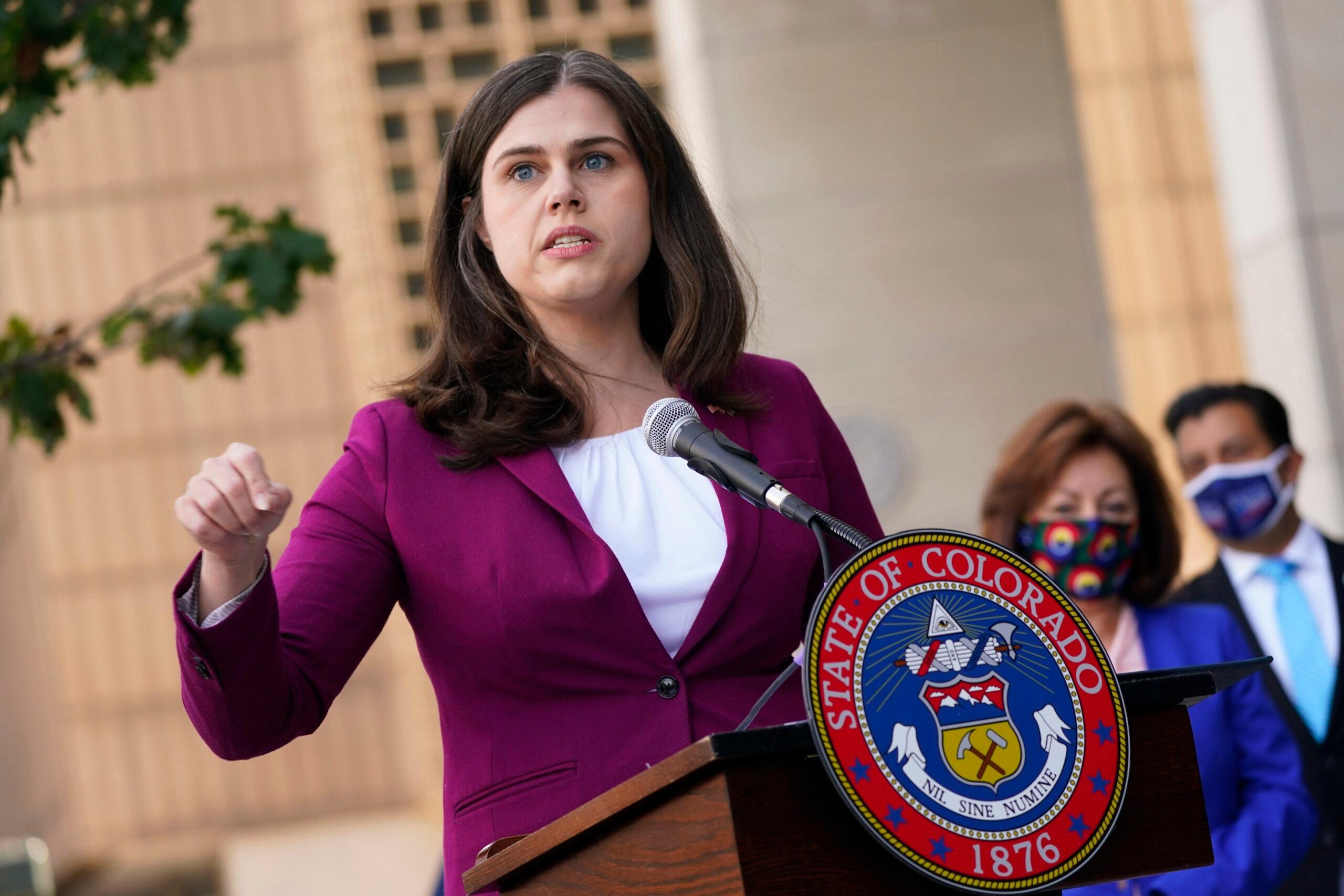
When the coronavirus forced more than a million Colorado teachers and students out of classrooms last March and into remote learning, Kristopher Schuh echoes the phrase commonly uttered by school administrators:
“I felt like we were building the plane as we were flying it,” he said.
To the deputy superintendent for Jefferson County Public Schools, the reopening of schools this fall feels different.
Yes, there are still many unknowns. Schools don’t have a clear idea on how many kids will show up and health regulations may change. But Schuh, whose personality is upbeat and confident, said the thinking on reopening is much more strategic than the closure, which took everyone by surprise. First, there’s been some time to plan, even if it’s just weeks. But mainly, he said, it’s because of unprecedented collaboration between school districts and health and education officials.
“Collaboration is the number one word I would use. It’s sharing of practices, sharing of ideas. It's been tremendous. This is an opportunity for us to continue to improve education for all students.”
Despite overwhelming obstacles, Colorado’s second largest school district, has taken a careful and methodical approach to planning for that first day of school — from who will take a student’s temperature before they walk into the building — to how teachers will be trained on new digital platforms in the event remote learning continues. It has taken thousands of work-hours involving teams of principals, teachers, health officials and district administrators, brainstorming and confronting challenges, anticipating every possible scenario.
The Herculean challenge is not without worries.
“What keeps me up at night is this tension between educating students and public health,” Schuh said.
At every turn, district officials have had to weigh how to carry out the best education possible for the greatest number of students against the health risks of bringing students together. One thing is clear said Schuh, who, along with chief strategy officer Tom McDermott, began leading the restart efforts April 20:
“We cannot become a vector for the virus,” he said. “We need to protect our staff members. We need to protect our students. We need to protect our families. So public health has been a cornerstone of this plan.”
The origins of a plan: input from all corners
Mark Johnson, executive director of Jefferson County Public Health told school officials to look at the hundreds of logistical details facing them through four filters: place, space, time and people. For example, outdoors is better than indoors, larger rooms are better than smaller, the less time students are together the better, and the fewer people in a grouping is better.
The initial draft plan for reopening was 39 pages. On May 13, Schuh sent it to principals and leaders of the associations representing teachers, classified staff and administrators for feedback on each of the document’s twelve sections. By May 18, all 14,000 JeffCo school employees had access to the draft plan. The new document was tightened up considerably and was opened up for community feedback May 22 through June 30.
“Once we put that out I started getting emails from superintendents around the nation saying, ‘Hey, can we adapt it, can we use it?’” said Schuh. “We said, ‘Sure,’ and then it was ‘Can you please let us know what you think, once you adapt it and improve it, please let us know what you did.’” And another feedback loop began.
As feedback poured in from nearly 17,000 people so far, Schuh assigned leaders at the elementary, middle and high school level to create teams of principals, educators, and health and safety officials to dig into the plan’s various sections. What will academics look like? Do we have the right technology? How will we address the specific needs of gifted and talented children or children with disabilities?

In mid-June, with the draft model in hand, teams of educators and health officials walked through schools to envision every minute of the day from a student’s perspective — from getting off the bus, to taking temperatures, to identifying one-way hallways, to mocking out what first period will look like.
In July, the district will create three model schools for principals, who return to work in mid-July, to see what schools will look and feel like, according to Jeff Pierson, the district’s director of Safe School Environments. His team plans to create narrative videos for families about what a day in the life of a JeffCo student will look like.
“What's it going to look like to get my temperature screened? When I walk onto that bus, where are students going to be sitting in the zigzag approach? Every component of what a day could look like from the food line, classroom, restrooms, and directional arrows ... anything that they could potentially encounter, we can include in that narrative video.”
But JeffCO officials didn’t just rely on their own thinking. COVID-19 has prompted a sea change in how Colorado’s large districts operate. Shuh said districts used to keep ideas to themselves.
“It's kind of always felt that way, but not anymore,” said Shuh. “We are sharing everything. So yesterday for example, Cherry Creek shared three documents with me that I am so stoked about. I've sent it out to just about everybody I know. We're becoming so much closer knit as a school community along the Front Range.”
Every Monday, 18 school districts meet with state public health and education officials for updates. In addition, Schul said he meets with several large school districts every day, “because things change that fast.” Every day new medical information also arrives in district emails, which can alter plans. And by the end of May, JeffCo had started studying what was happening in school systems around the world where the pandemic hit earlier.
Superintendent Jason Glass said internationally, there hasn’t been a surge of cases when school reopens. But all school systems have a series of virus mitigation strategies such as COVID-19 tests for all students and staff, temperature screening, social distancing, and a variety of policies on mask wearing.
“Every system we've studied has some combination of those things that they're using to try and control the virus. We have not studied a case where people went back and just pretended that it didn't exist,” Glass said.
During a recent school board meeting, several JeffCo parents called for a full return to how things were before. But school officials say, that’s not happening.
“We have to always keep in mind, we have staff members and we have kids who can take this back to homes where grandparents or other family members live,” said Glass. He said the fact that the number of worldwide cases of the virus in children is extremely low, “that doesn't absolve us from our societal obligation to make sure that we have a safe environment, not just for our kids, but for our staff and our entire community.”
Shifting from a hybrid model to fully in-person for elementary students
Initially, because students had to be six feet apart, the district planned a hybrid model of half remote learning, half in-person learning. But gradually, health experts began stressing instead keeping “cohorts” of students together. Elementary students will now be able to attend school five days a week. Peak Expeditionary school Principal Tim Carlin each homeroom class will stay together all-day and other teachers will travel to students.
“We picture our art, music and PE teachers coming to classrooms and picking them up safely and bringing them to a safe environment.”
Also factoring into that decision was what community members were saying. Ninety percent of survey respondents said their children would certainly or likely attend in person; about 10 percent preferred a remote learning option.
Parent Leonor Lucero said there are negative mental health and emotional impacts to children staying sequestered at home. She is also worried about the loss of academic skills.
“Three months of school at home does not equate to three months of school in the classroom,” she said. “You add that with the usual regression that kids have in the summer, they’re going to start the school year six months behind.”
Families, however, will be able to choose a fully remote learning option.
Right now JeffCo’s plan for middle and high school students is a mix of remote and in-person learning, because older kids must move to other classrooms. But the district is studying whether it’s possible for older grades to come back full-time too. School officials have made it clear that’s their preference. A final decision will come July 8 with the release of JeffCo’s final restart plan. Families will receive a survey asking them to choose a remote or in-person option.
Keeping everyone healthy
Not all schools have nurses, so district nurses and other health officials will host online and in-person training with school staff on symptom collection, how to use personal protective equipment, thermometer troubleshooting, and isolation procedures. The JeffCo district has budgeted $5.5 million for personal protective equipment and start-of-school costs.
Staff will learn what symptoms will trigger action. Julie Wilken, the district’s director of health services, said those include a high temperature, a recent cough or shortness of breath and a recent loss of smell. Staff must be instructed on isolation procedures when a student is COVID-19 symptomatic.
“Getting them out of the building quickly, being able to contact trace back to their cohorts ... all of those measures matter significantly,” she said. “We want to stop the transmission and mitigate the spread as quickly as possible.”
The symptomatic student’s siblings would have to be isolated and quarantined. Schools will follow explicit procedures in following up with families when students are quarantined at home.
At the same time Wilken said, privacy is key. “Nobody deserves to be singled out and stigmatized for contracting and transmitting this disease.”
One of the trickiest challenges is how do you transport the 18,000 students the district typically drives to school when you are limited to 14 or 15 students in a bus that typically carries 60 to 65 students?
“We would now need four buses to deliver that same number of students on that particular route,” said Steve Bell, chief operating officer. “It is a challenge.”
His team has discussed route consolidations, staggered start times, modifying and combining routes. They’ll also plan to survey riders.

What about the teaching?
After spending time reorienting students and checking on them emotionally, one of teachers’ first tasks will be to administer a test to assess students’ academic levels after five months out of school. They’ll set new goals and targets for each student.
The biggest challenge facing teachers is how to deliver remote learning to part of the class while potentially teaching other students in-person. The district’s survey showed about ten percent of families, or 8,000 students, may choose the remote option, which Superintendent Glass notes, is akin to running the 23rd largest school district in Colorado in tandem with the in-school system.
Some of those families may enroll their children in the JeffCo Virtual Academy, the district’s online school, or they can elect to learn through a remote program that their homeschool must offer as well.
Lakewood High School Principal Dan Bock said his teachers have already raised questions.
“Teachers are going to be asked to do an incredible amount of work keeping all kids on track, and it’s not to say that that can't be done, but it really is a tremendous challenge,” he said.
Many schools are planning on using classroom aides, central office and clinic staff to carry out the symptom screening functions as students enter the building.
That way, said Jennifer Pennell, principal at Dunstan Middle School, teachers can focus on instruction and meeting other needs of students, “especially anticipating some potentially larger social emotional needs when they've returned.”
Teachers will soon be surveyed about whether, in the event of a health condition, they’ll request a remote assignment. Deputy Superintendent Schuh, a former principal, envisions schools collaborating, by designating teachers to prepare remote lessons for groups of students from multiple schools.
Still, teachers and others have anxiety about exactly how things will work.
Nancy Yanasak, a parent in Jeffco, is worried that gifted and talented children will lose opportunities in a restart model with tightly restricted “cohorts” of children. Typically, some schools have hour-long or even half-day “pull outs” for gifted and talented students to learn in a more challenging environment with a different teacher.
“The cohort model will likely completely disrupt these children’s opportunity to meet their academic needs and provide enrichment,” she said.
Anxiety is high among some teachers, especially those who teach art, music and physical education because those domains are tactile and physical. After reviewing a draft of the district’s plan, Robert Wright, who teaches P.E. at two elementary schools, said he has major questions.
“I’ve been teaching for 21 years, and I have no idea how my teaching that I’ve perfected over 21 years even relates to this,” he said.
District officials say that is why school will start August 24, well after teachers’ scheduled return August 12, so educators can receive training and practice health protocols and how their classes will operate. Schools will likely continue to fine-tune what the school day looks like until the end of summer.
In the meantime, Deputy Superintendent Schuh tries to see a silver lining that he hopes will one day benefit his district’s 84,000 students. He looks forward to the day a COVID-19 vaccine is discovered and he can meet all the Front Range school administrators he’s met virtually during the pandemic, and who have become his right hand support.
“Just seeing them and hugging them and drinking a beer with them and talking with them. Jeffco will be better because when this is over because I’m going to keep on talking to these people, I’m going to keep on collaborating with them.”









